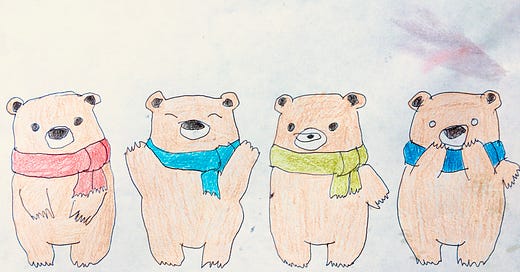This weekend, I got a call from a former team member who was new to managing people and was trying to figure out how to approach a new direct report. A chance to explain one of my favorite mindbending models : SCARF!
Status
Certainty
Autonomy
Relatedness
Fairness
The SCARF model attempts to summarize neurological processes in all our brains that are designed to maximize rewards / minimize threats. Basically, it boils down the handful of things that make people tick, in the context of professional fulfillment. And my own take, which is not supported by the research linked below, is that individuals tend to have 1 primary SCARF dimension when it comes to their careers; basically, there’s a core driver behind anyone’s workplace behavior. And if you can identify where they stand on the motivation spectrum, it becomes much easier to serve as their manager.
So let’s dig into each aspect, and I’ll focus specifically on how it plays into team dynamics.
[1] Status
When an employee’s perception is anchored on where they stand relative to others, Status is their primary driver. These are folks who pay attention to promotion announcement emails, titles on LinkedIn, and who might be the manager’s “successor”. Status being a chief motivator isn’t necessarily a bad thing; I just find that managing such folks requires reminding them of the all the ways they are treated as “special”.
[2] Certainty
For folks that value Certainty, it’s all about creating a calm and controlled work cadence. They love the rhythm of annual planning, quarterly goals, predictable releases, and the biweekly demo hour. They don’t love escalations, randomization, or chaos. Irrespective of the broader environment, coaching such a person requires a manager to create a sense of order and predictability.
[3] Autonomy
People that value Autonomy want to feel like they are not only accountable for outcomes, but also have the latitude to drive things their way. Feeling micro-managed, or even a tad too much oversight, can send such an employee spiraling. Building trust and having clear communication is a must when managing someone whose focus is Autonomy.
[4] Relatedness
For the cohort that is motivated by Relatedness, their tribe is very important. They identify with the group of people they work with day in and day out, and anything that messes with that can throw them off. For example, this is the type of person that leaves a job because multiple folks they were close with also departed. When making org changes, these are the people to think about with regards to 2nd order impact. As a team leader, the best thing to do with employees that value Relatedness is to build multiple levels of strong bonds that they can lean on.
[5] Fairness
For the Fairness crowd, it’s paramount that the rules of the team / organization / company be transparently communicated and evenly applied. Any hint of favorable treatment is a no-no. Over-communicating not only decisions but also the “why?” behind them goes a long way with this group. And in situations where exceptions need to be made, painting them as such vs happenstance is key.
I’d love to hear from readers on the approaches they’ve taken to coach folks across the motivation spectrum - please chime in via comments👇. And if you enjoyed this post, please consider subscribing.
further reading / references
the original paper on SCARF as a model for collaboration and influence
you can see related publications from academic Dr. David Rock here
this research links the SCARF model to the happiness of senior leaders
this article zeroes in on the minimize threat / maximize reward angle
if you prefer fitness over fashion, check out BICEPS vs SCARF
you can read about my other favorite mindbending models here
this essay highlights several frameworks (Meyers-Briggs, Self-Monitors, OCEAN, ghSMART, Enneagram) to figure out “what’s going on here, with this human?”
childish drawing / interpretation





Your first link in further reading seems to be broken.